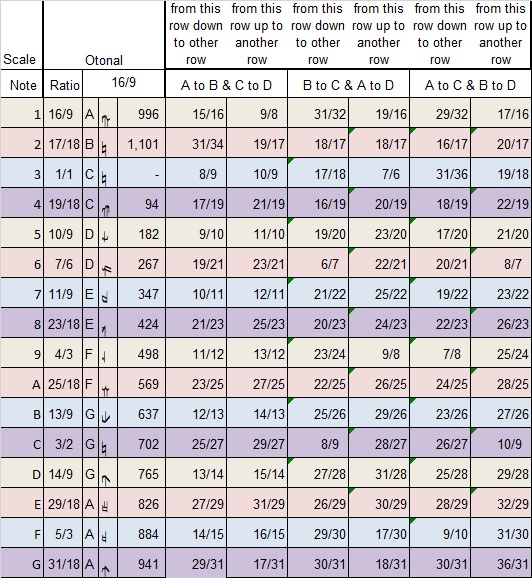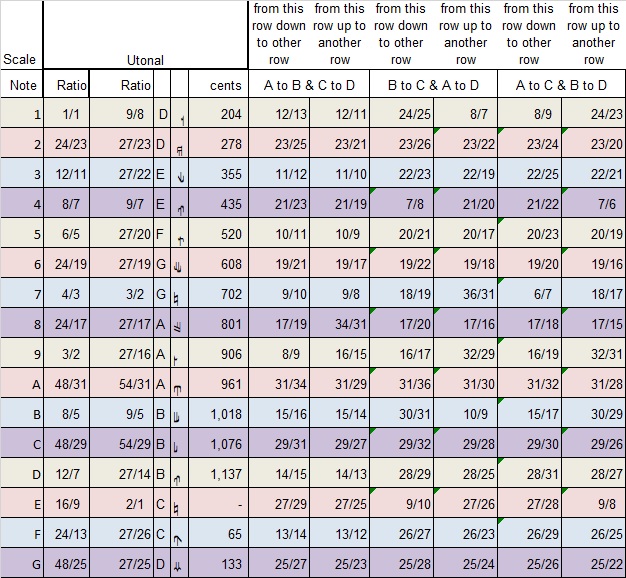
This is a new variation that uses the 16 note otonal and utonal scales of the 31-limit tonality diamond differently that the previous ones. In the first 11 variations, I choose pairs of triads to make a hexad for each key. For example, if I was playing in B♭ major, I’d select the otonality on 16:9, and pick one triad based on 4:5:6 from the 16:9, and another based on 7:9:11. The same sort of thing was done for an utonal scale, in this case based on 9:8.
For this variation, I’ve been exploring four note chords. There are four in a 16 note otonal or utonal scale based on the 31-limit tonality diamond. For example, in this variation is still use the 16:9 otonal 16 note scale, but instead of contrasting two triads, I chose to contrast four tetrads (4-note chords). The most consonant is one based on 4:5:6:7/9, shown in tan shading. I refer to that as the “a” tetrad in the chart below. The “b” tetrad, in pink, is based on 9:11:13:15/18, much more challenging to the ear accustomed to 12 tone equal. Keep going up the harmonic series, is the “c” tetrad in blue uses the 17:21:25:29/32, and the “d” tetrad in purple is based on 19:23:27:31/32. These intervals are more challenging.
Here is the 16:9 otonal 16-note scale with the different ratios for each of the four tetrads based on the 16:9 otonality, abc&d.

And the utonal scale based on the 9:8 utonality.

Variation #12 starts out with the “a” tetrad, plus glides and trills starting on the “b” tetrad and moving to the “a”. The next section has “a” tetrads moving to the “b” tetrad. There are more combinations of “c” and “d” that follow, with a return the the b to a tetrads towards the end.
There are sections in between that quickly move through the chords in measures 34 and 36, then back to iterations of the 16:9 otonality and 9:8 utonality.
The piece ends with a legato rendition of measures 33 – 36 as written by Rzewski.
Most of the selections of the lists of lists uses the Markov Chain Drunkard’s Walk algorithm, but I sometimes mix things up by choosing a repetition-heavy randomization, that attempts to repeat the previous choice fairly hard, but not absolutely. It basically picks a random number, and if it’s not the same as the previous one it picked for a particular list, it tries another for a fixed number of iterations. The result is repetition of many but not all selections for a few beats.
or download here:
People var #12 – 50